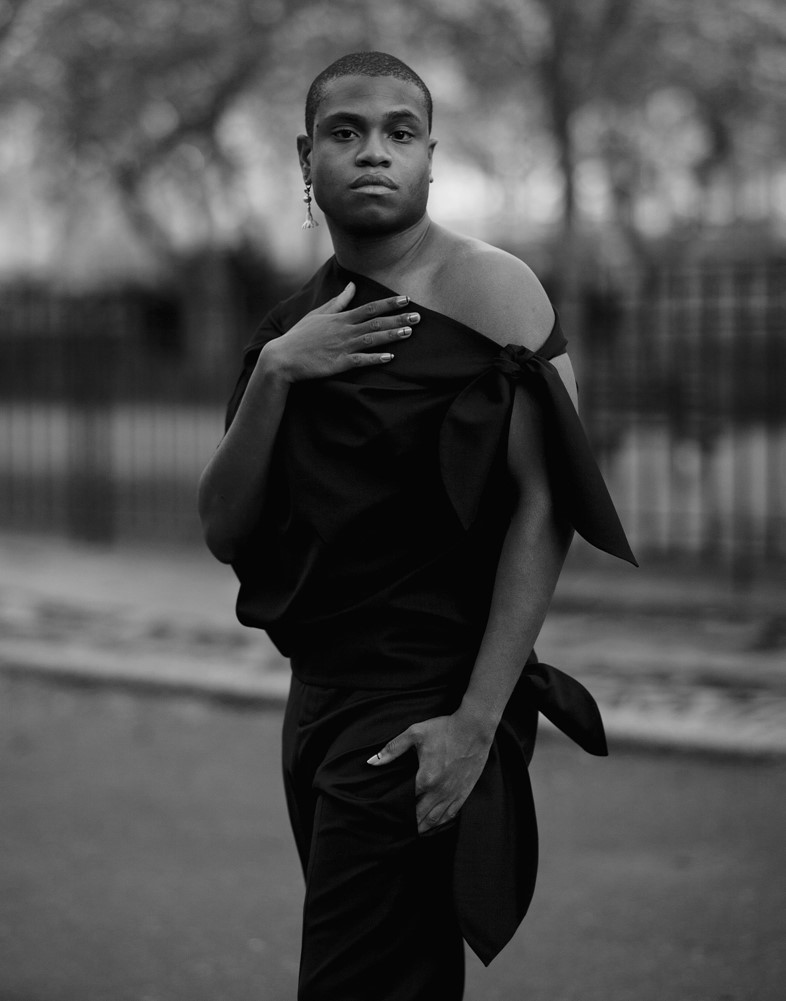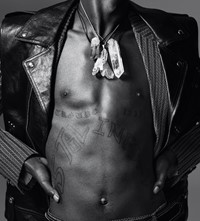The photographer’s first monograph, Young New York, is a defiant portrait of his peers on Manhattan’s Lower East Side
- TextJack Moss
Most of the portraits in Young New York, the first monograph by photographer and Another Man contributor Ethan James Green, were taken in Corlears Hook Park on Manhattan’s Lower East Side. This short stretch of green space on the East River, close to Williamsburg Bridge, has been populated by outsiders since the 1800s: gangs and sailors, bandits and sex workers, many originating from the impoverished immigrant tenement buildings which once lined the park.
Green’s photographs also capture those on the peripheries, albeit those belonging to the 21st century. His are the young peple found in night clubs and art schools, or at fashion parties, dressed to the nines, and more often than not part of the city’s underground LGBTQ communities. Corlears Hook Park, and the housing projects which now surround it, provide the backdrop for a series of portraits which try to capture the youthful subjects in flux: that moment when the world stretches before you, glorious and terrifying, ready to be conquered. Bodies are often in a state of transformation too: some of the subjects are captured mid-, or just post-, transition; others disregard the boundaries of gender altogether. They each face Green’s lens face on, vulnerable and defiant at once.
Young New York began with a chance meeting with model and actress Hari Nef, who he saw one evening outside of a Meatpacking District bar, and asked if he could take her photograph sometime. Nef, the first trans woman to sign to IMG Models, agreed; later, she would bring friends of hers to Corlears Hook and the neighbouring housing projects to stand for Green. Others followed, discovered by the photographer in the New York’s bars and nightclubs, or at fashion week (fashion links many of the participants: Dara is a model who has since walked for Marc Jacobs, Matt Holmes is a stylist, Vejas Kruszewski a fashion designer; others are from the adjacent New York undergound art scene).
The photographs, when gathered together, provide a portrait of a fledgling youth culture united in its defiance of the boundaries of race, sexuality and gender – a focus which has seen his work deemed reminiscent, in style and subject, of Diane Arbus. Like her most memorable street portraits, Green’s images are enlivened by his subject’s complicity in the process: the final photographs part documentary, part performance (often, he will ask them to reenact Richard Avedon images of models in Parisian couture). Unlike Arbus, though, Green is embedded in the community he photographs – many of the subjects also close friends – which makes Young New York feel like an affirmation: we exist, and this is who we are. “I peered down over Ethan’s shoulder,” Nef says of looking at her very first portrait by the photographer, “and – to my surprise – saw myself.”

Perhaps the greatest influence on Green’s photography is David Armstrong – known for intimate his photographs which captured a generation of young gay men, often in their bedrooms or private spaces – who became a mentor after meeting when Green worked as a model upon moving to New York. “I thought I would look for the equivalents of the people in David’s pictures, but today,” Green said in a recent interview with told The New Yorker. “He really saved me. He believed in me before he even knew what I was doing. When he told me how much I reminded him of when he was my age, that changed my life.”
Armstrong passed away in 2014; that same year, Green began photographing Young New York. The resulting series of photographs, published by Aperture, have seen Green embraced by the fashion establishment, working with brands like Miu Miu, and Alexander McQueen and shooting for magazines like Dazed, Vogue and Another Man; most recently, he shot Another Man’s Spring/Summer 2019 cover, starring Ashton Sanders.
In the introduction to the book, by Michael Shulman, Green says that he has moved on since Young New York: like all great portraits, the moment was fleeting, and he just happened to be there to capture it. Some of the subjects have left the city; others, like Nef, have found international acclaim. “I’m definitely not one of the kids anymore,” he says. “It really was just a moment in time.”
Young New York is published by Aperture, and available to order now.



















